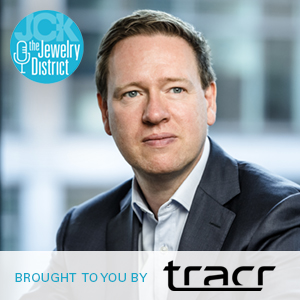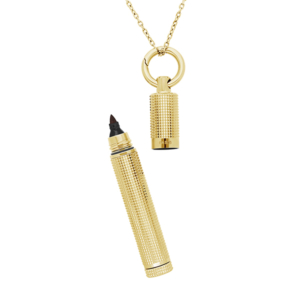
JCK editor-in-chief Victoria Gomelsky and news director Rob Bates welcome one of the most influential guests ever to join the podcast: Al Cook, CEO of De Beers Group. Al shares his backstory, comments on the current state of the diamond industry, and sheds light on the future of the diamond business in Botswana as well as what lies ahead for the lab-grown market. He offers insight on the impact of Russian diamond sanctions and outlines his vision for tapping De Beers’ Tracr tool not for profit but to improve transparency for the entire industry.
Listen Now
Sponsored by Tracr: tracr.com
Show Notes:
02:16 From geology to the jewelry world
08:15 The future of Botswana’s diamonds
12:20 U-shaped market rebound
15:25 Likely trajectory for lab-grown diamonds
24:29 Perspective on Russian diamond sanctions
27:47 Tracr could be key to more transparency
Episode Credits
Hosts: Rob Bates and Victoria Gomelsky
Producer and engineer: Natalie Chomet
Editor: Riley McCaskill
Plugs: @jckmagazine; tracr.com
Show Recap
From geology to the jewelry world
Victoria and Rob welcome De Beers Group CEO Al Cook and ask about his journey from geology to gems. Before joining the company in 2023, Al spent 27 years working in the oil and gas industry.
When COVID-19 hit, he was in Africa trying to figure out how the pandemic was likely to affect business there. He struck up a conversation with Mark Cutifani, the former CEO of Anglo American, who told him about how De Beers was supporting its workers during the pandemic. Impressed, Al responded that he would like to be considered for a job if one ever arose. A short time later, De Beers called.
It was a surprisingly fitting career choice for someone whose childhood ambition was to become the United Nations’ secretary-general. “I’ve always been a globalist,” explains Al, who was born in Britain and raised in Switzerland. “I love traveling. I’ve lived in seven countries and worked in far more. I really believe the world’s problems are best solved by bringing people together.”
That philosophy served him well at oil and gas companies—and now at De Beers. In both fields, his focus has been on getting experts with diverse backgrounds—engineers, financiers, politicians, etc.—to work collaboratively to find solutions to common problems.
The steepest learning curve for him has been the retail side of the diamond business. Al says he’s still finding out how retailers sell diamonds and what De Beers can do to help them meet customers’ evolving demands.
The future of Botswana’s diamonds
When asked about Botswana contract negotiations, Al reports that “it’s been intense, but we’re making good progress.” He praises the country’s government for its dedication and work ethic. He recognizes how high the stakes are: More than 80 percent of Botswana’s export revenues come from diamonds. “The government—led by President Masisi—was negotiating the future of the country, the people, and the legacy of diamonds, [so] it’s no surprise that there was a lot of passion,” he notes, adding, “I think we’ve now got a deal that’s great for De Beers and really great for Botswana.”
Under the new terms, Botswana will sell 50% of the diamonds it produces, in essence becoming a De Beers competitor, Rob points out. Will this change the landscape? “When you consider that Botswana owns 50% of [the] Debswana [mining company], our joint venture, it was always natural that over time Botswana would seek to sell 50% of the diamonds,” Al replies. “I fully support the evolution of [Okavango Diamond Co.], the government’s diamond company…into a responsible, mature company that will move away from auctions and toward long-term contracts.”
U-shaped market rebound
Victoria asks Al to weigh in on this year’s diamond climate. Though “2023 was a really tough year for diamonds,” he believes a slow, long-term—or “U-shaped”—recovery is underway.
To ensure that this continues, De Beers and other key players “need to make sure the way we market diamonds resonates for an audience in the 2020s,” Al says. To that end, De Beers is shifting its marketing to focus more on social media and to work closely with retail partners around the world.
He cites De Beers’ recent “Seize the Day” ad campaign as a prime example of a successful collaboration with retailers. “Many companies came together to repeat that message, so we multiplied the effect,” he says. “We got to 10 times as many doors, windows, and displays by working with retailers.”
Likely trajectory for lab-grown diamonds
And what of the lab-grown diamond market? Al believes the U.S. market is at an inflection point. “We’ve had a year where lab-grown diamonds made real inroads into the diamond markets,” he says. “I think we’ve reached peak lab-grown in the United States. We’ll still see the volumes come up, but we’ll see the value come dramatically down.”
As evidence, he points out that the price of lab-grown stones has dropped 90-95% from five to six years ago. Now he says that you can buy 10 to 20 lab-grown diamonds for the equivalent of one natural diamond, and that price gap will continue to widen.
Victoria wonders what this means for De Beers’ Lightbox brand. “We see Lightbox as a terrific way of demonstrating the differentiations between natural diamonds and lab-grown diamonds,” Al says. “We’re seeing the whole lab-grown diamond business become a low-cost, low-revenue business.” He says to expect news on Lightbox prices soon.
Al believes the real future of lab-grown stones lies in technology and industry. As the products’ price continues to drop, opportunity arises for myriad technological applications.
Perspective on Russian diamond sanctions
When it comes to possible G7 sanctions against Russian diamonds, De Beers has strong views. “Over the decades, African producer countries have gained freedoms on how they export their diamonds and earned respect the world over for the way they certify their diamonds,” Al says. “We think it would be entirely wrong to…force African producers to send all their diamonds [through a rough node in] Belgium.”
He hopes that after the G7 technical committee’s visit to Botswana, members will appreciate the standards De Beers has set and recognize that ethical diamond producers such as Botswana can be trusted to certify where their diamonds come from.
He says that the way European Union enacted the first polished sanctions in March created a lot of disruption. “We’ve had diamonds…delayed over weeks or more in Customs going into the European Union. In the U.K. and the U.S., we haven’t seen any problems,” he adds.
He hopes the EU will take a cue from the U.S. and U.K. approach to certification and feels optimistic that additional sanctions this fall will lead to more customers knowing where their diamonds originated. “As an industry we need to increase our transparency,” he says. “If this gives us encouragement to move in that direction, that’s good.”
Tracr could be key to more transparency
In discussing diamond origin, the conversation turns to De Beers’ Tracr tool. Rob mentions concerns that De Beers will control Tracr’s proprietary information. Al assures listeners that the data in Tracr is independent of De Beers.
“We believe Tracr should be a tool for the industry, not for De Beers,” he says. “We are willing to work with governments and other companies at no profit to ourselves because we believe Tracr is a tool that can really help us through this transition with the G7. If we can do that, we will provide Tracr at cost to the industry in a way that everyone can benefit from.”
Any views expressed in this podcast do not reflect the opinion of JCK, its management, or its advertisers.
- Subscribe to the JCK News Daily
- Subscribe to the JCK Special Report
- Follow JCK on Instagram: @jckmagazine
- Follow JCK on X: @jckmagazine
- Follow JCK on Facebook: @jckmagazine







